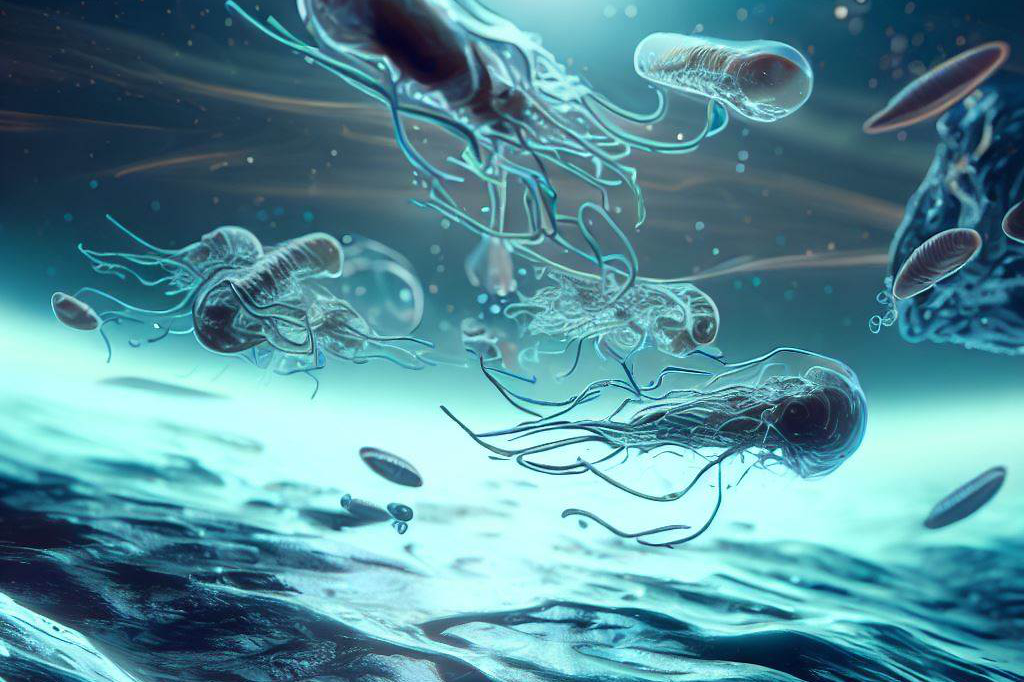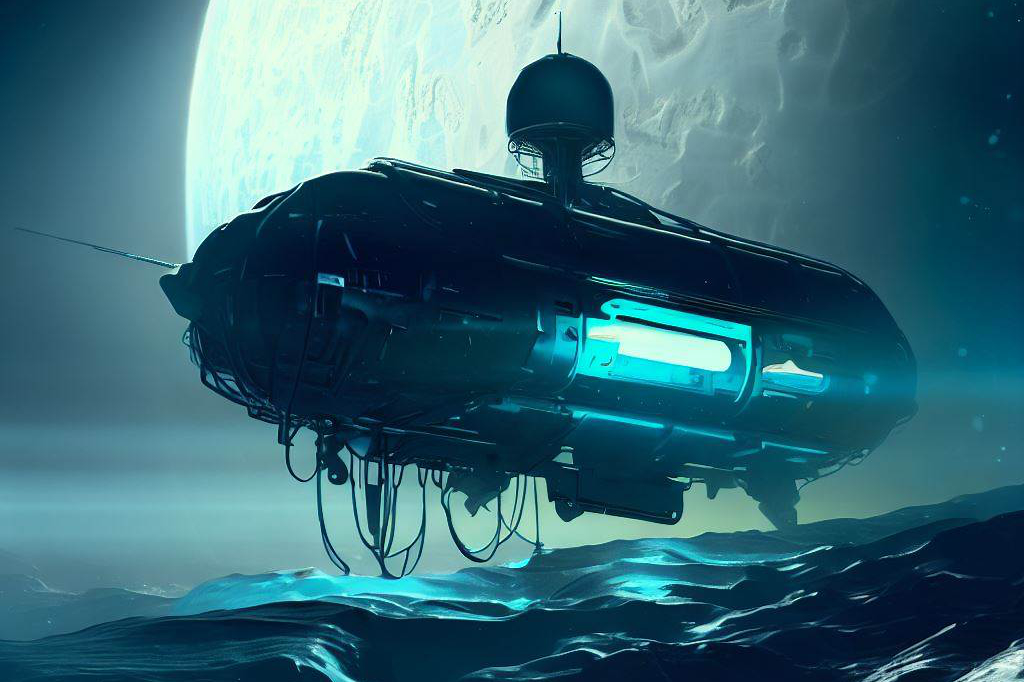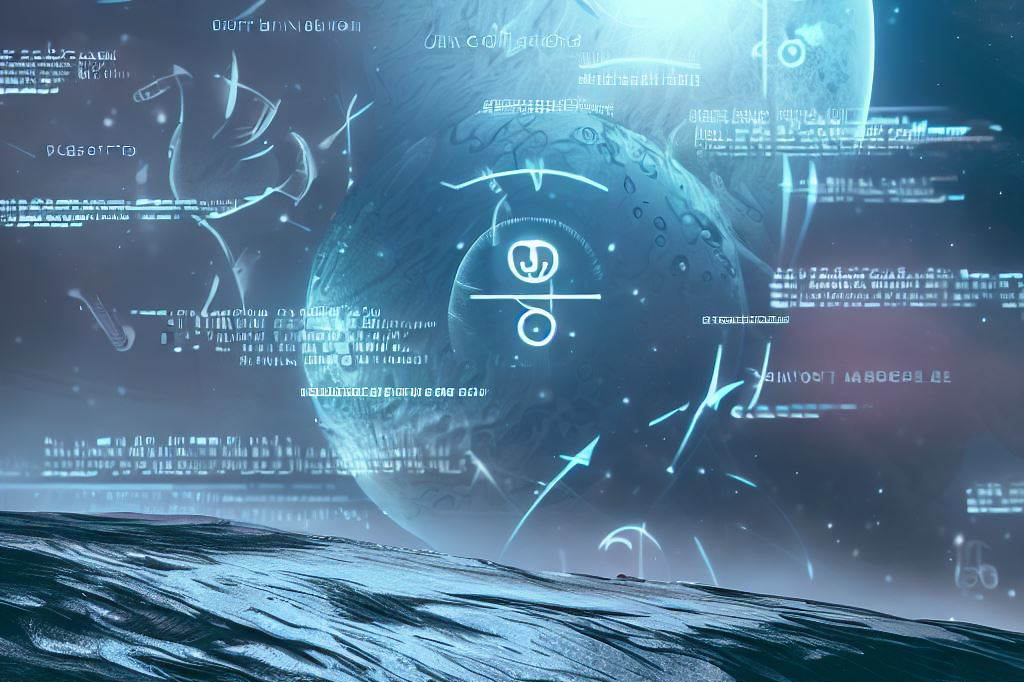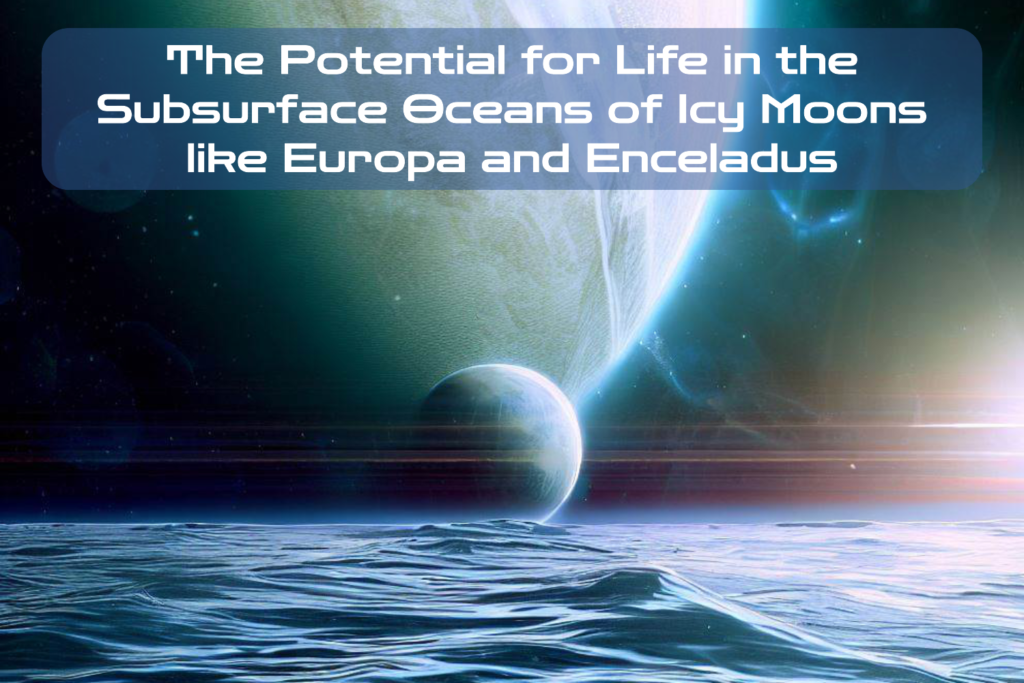Uncovering the Possibility of Alien Life Forms
Europa and Enceladus are two moons that have garnered much attention from scientists in recent times. These icy moons within our solar system are believed to house subsurface oceans, which could potentially hold the key to discovering extraterrestrial life forms.
The tantalizing possibility of finding life beyond planet Earth has fascinated researchers and space enthusiasts alike, making these two moons some of the most exciting subjects for space exploration.
Europa is one of Jupiter’s largest moons, with a surface entirely covered by ice.
However, beneath its icy crust lies an enormous ocean that’s twice the size of all of Earth’s oceans combined.
Enceladus, on the other hand, is one of Saturn’s smaller icy moons that has shown signs of geologic activity and warm spots at its south pole.
As observations continue to reveal more about these fascinating worlds, it becomes increasingly apparent that they may hold clues to unlocking some of our most profound questions about life beyond our planet.
The idea that there could be alternative forms of life outside Earth has fascinated astronomers for decades.
While it may seem like something out of science fiction, new developments in technology are making it possible for us to explore even the most remote areas within our solar system. With research efforts directed towards learning more about Europa and Enceladus, we may be one step closer to uncovering whether or not life exists beyond our planet as we know it today.
The Subsurface Oceans of Europa and Enceladus

A Deep Dive into the Icy Moons
Europa and Enceladus are two of the most intriguing bodies in our solar system, thanks to their subsurface oceans. These moons have a thickness of ice that potentially hides vast liquid oceans beneath.
The deep, dark, icy shells might seem inhospitable to life, but their interior could be an environment where living organisms are thriving.
So what’s down there?
Europa’s subsurface ocean is believed to be twice as massive as all of Earth’s oceans combined! It is estimated that this ocean extends around 100 kilometers below its frozen surface.
The icy shell above the ocean ranges from 10 to 30 kilometers thick with the average thickness being approximately 15 kilometers. Scientists believe that the composition of Europa’s ocean is salty water with a rocky sea floor.
Comparing Subsurface Oceans
Enceladus has subsurface oceans that may share similarities with Europa, but they are different in some important ways. Enceladus’ outer crust is much thinner than Europa’s, only about six kilometers thick on average.
Its subsurface ocean is concentrated more towards its south pole and it’s believed to be also composed mostly of salty water with a rocky bottom. In comparison to Earth’s oceans, these icy moons’ subsurface oceans have many differences but also some similarities.
While Earth’s ocean has an average depth of about 4 km and covers around 71% of our planet’s surface area, these icy moon bodies hold vast reserves of liquid water under layers upon layers of ice shells hundreds of kilometers thick. All three environments could potentially host life forms in different ways and with unique characteristics due to each body’s unique geologic history.
Potential for Life in Subsurface Oceans

Explanation of how life could exist in these extreme environments
The subsurface oceans of Europa and Enceladus are some of the most extreme and inhospitable environments in our solar system. Temperatures can drop well below freezing, and the pressure is incredibly high due to the weight of the ice above.
Despite these challenges, scientists believe that life could still exist in these environments. One reason for this belief is due to the presence of hydrothermal vents on Earth, which are found at the bottom of our own oceans.
These vents are able to support a range of extremophile organisms that have adapted to survive in highly acidic and nutrient-poor environments. Similar hydrothermal vents may exist on icy moons like Europa and Enceladus, providing a potential energy source for any organisms living there.
Another reason for optimism is the discovery that some microorganisms can survive in extreme conditions by going into a dormant state, and waiting for more favorable conditions before becoming active again. This means that even if these subsurface oceans experience long periods without any viable energy sources, life may still be able to persist.
Discussion of possible organisms that could survive in these conditions
While we don’t yet know what kind of organisms might live in subsurface oceans, scientists have proposed several possibilities based on what we know about extremophiles on Earth.
One possibility is bacteria or archaea that use chemosynthesis as a way to produce energy.
These organisms would feed off chemicals released by hydrothermal vents or other geological activity within the subsurface ocean.
Another possibility is multicellular organisms like sponges or tube worms that filter-feed on particles drifting through the water column.
These types of organisms have been found living near hydrothermal vents on Earth’s ocean floor. It’s possible that more complex forms of life could exist in these environments.
Scientists have speculated that organisms with advanced sensory organs and complex nervous systems could evolve in these environments, potentially even reaching a level of intelligence comparable to Earth’s marine mammals. However, this is still highly speculative and would require a lot more evidence before it could be seriously considered.
Exploration and Research Efforts

Overview of past and current missions to study Europa and Enceladus
Scientists have been studying Europa and Enceladus for decades in an attempt to better understand the potential for life on these icy moons.
In 1979, NASA’s Voyager 1 spacecraft provided the first glimpses of Europa, revealing a smooth icy surface with few craters.
Later, in the early 2000s, NASA’s Galileo spacecraft made several close flybys of Europa, providing more detailed images and data.
In 2005, NASA’s Cassini spacecraft began orbiting Saturn and studying its moons. During this mission, Cassini made several flybys of Enceladus.
In March 2008, Cassini detected jets of water vapor and ice particles erupting from fissures on Enceladus’ south pole. This discovery was a major breakthrough in our understanding of the moon’s subsurface ocean.
Explanation of future missions planned to further investigate the potential for life
There are several upcoming missions planned to explore Europa and Enceladus in greater detail.
NASA plans to launch the Europa Clipper mission in the mid-2020s, which will conduct dozens of flybys over a three-year period to study the moon’s composition, geology, and subsurface ocean.
In addition to the Europa Clipper mission, NASA is also developing a lander that would be able to touch down on Europa’s surface and drill into its icy crust to access its subsurface ocean directly.
As for Enceladus, there are currently no missions specifically dedicated to studying that moon’s subsurface ocean; however, scientists are hoping that future missions will be able to sample plumes from geysers erupting from its surface as well as explore its unique geological features.
Overall, past and future missions to study these icy moons have provided invaluable insights into the potential for life on worlds beyond Earth. As technology continues to advance, we can only hope that these missions will reveal even more exciting discoveries.
Challenges to Finding Life on Icy Moons

The Difficulty Associated with Studying Subsurface Oceans
Studying subsurface oceans is extremely challenging and requires special tools and techniques, as scientists cannot directly access these environments. To study subsurface oceans, scientists typically rely on remote-sensing techniques such as using telescopes or cameras to capture images of the surface or using radar to map the subsurface ocean.
However, the icy crust of these moons presents a challenge for remote sensing due to its thickness and opacity. Furthermore, studying subsurface oceans requires specialized equipment that can withstand extreme conditions such as high pressure and low temperatures.
Instruments need to be designed to collect samples from kilometers beneath the ice layer without contaminating them with terrestrial materials. This poses a significant challenge for researchers, who must ensure that their equipment is sterile and free of any contaminants when they deploy it.
How Scientists are Overcoming These Obstacles
Despite these challenges, scientists have made significant progress in overcoming obstacles that previously made it challenging to explore these icy moons’ subsurface oceans. They have developed new technologies such as drills capable of going through kilometers of ice while keeping their instruments sterile.
Scientists are also exploring more innovative ways of conducting research on these moons, such as designing missions that would involve landing on the surfaces, drilling through the layers of ice down into the subsurface ocean with specialized probes or rovers equipped with sampling instruments. This way, they can measure temperature variations in ice and also detect signs of life like atomic oxygen around Enceladus.
Another method involves sending advanced probes that use sophisticated electromagnetic waves capable of penetrating deep below the ice layer without requiring direct access while gathering data about subsurface ocean composition. These methods would allow for unobstructed views into one or more sub-ice ocean worlds in our solar system where life may exist.
Final Thoughts

This discovery has sparked a lot of excitement about the possibility that there may be other forms of life in our solar system or even beyond it. If there is proof of microbial or other simple forms of life in subsurface oceans, then it would increase our confidence that there may be more complex organisms elsewhere within our own galaxy or others.
It also changes our view of where we should search for extraterrestrial life. We now know that we don’t necessarily need to look solely at habitable zones surrounding stars; instead, we can explore icy moons with subsurface oceans as possible candidates because they can offer unique habitats not found elsewhere.
Overall, discovering whether or not there is extraterrestrial life out there will be one of the most exciting discoveries humankind may ever make. And although we haven’t found definitive evidence yet, it’s essential to keep looking because if even one organism lives beyond Earth, it would change everything about how we understand ourselves and our place in the universe.

C M, a seasoned editor, journalist, and consultant, is deeply fascinated by the convergence of technology, space, and the future of humanity.
With a particular interest in transhumanity, futurology, and the philosophical and ethical dimensions of these domains, C M serves as the lead contributor to SpaceSpotlight and TranscendSphere.
When not penning insightful articles on these rapidly evolving fields, C M indulges in their love for podcasts and books, proudly embracing their status as a ‘Happy Nerd Extraordinaire!’



